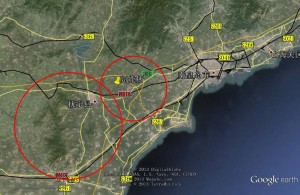With the discovery of the Higgs particle at the Large Hadron Collider at CERN in July 2012, after more than 50 years of searching, particle physics has finally entered the era of the Higgs, and the door for human beings to understand the unknown part of the Universe is wide open!
The Standard Model theory of particle physics is now gloriously complete: all particles that it has predicted have been found through experimental discovery with particle colliders. Now is the time to nail it down with precision and to match to new theories to cover the unknown components of the Universe, such as Dark Matter and Dark Energy, through Higgs with its field stretched out to the whole Universe space. The Higgs couples not only to known fundamental particles in the Standard Model but might also couple to unknown parts of the Universe. To understand the whole Universe, with 5% of known Standard Model particles, 27% of Dark Matter and 68% Dark Energy, on the basis of the fundamental principles, the key of keys is to understand the 125-GeV Higgs with great precision. In fact, this task has great importance in science in terms of the fundamental understanding the Universe as a whole, including its beginning, its current status and its evolution. It is in this sense that studying the Higgs with great precision becomes one of the top subjects of big science.
Different from a hundreds years ago, big science requires big instruments, a big scientific community, and big collaborations, especially in particle physics, which is becoming one of the precious cultures in human beings’ scientific activities. Different from a hundreds years ago, big science requires big investment in terms of both finance and human resources. However, just like a hundred years ago, big science rewards human beings in all aspects of life and activities on this planet and in space, such as electricity, nuclear power, and the World Wide Web as a (big!) byproduct out of big science research activity. And who knows, maybe (in at least philosophical point of view) human beings might one day be able to collide Dark Matter with the Higgs to release energy just like what we have done to hit atomic nucleus with neutrons to release nuclear energy.
Concerning precise Higgs studies and beyond, the International Linear Collider (ILC), baptised by the International Committee of Future Accelerators (ICFA) in 2004, is one of such future big instruments. It is an electron-positron linear collider based on superconducting linear accelerator technology, with a potential of exploring centre-of-mass energies up to 1 TeV. In 2013, the ILC team finished its Technical Design Report (TDR), and Japan is considering to become its hosting country.
In September 2012, right after the Higgs was found at the LHC, Chinese scientists proposed a circular electron-positron collider in China at 240 GeV centre of mass for Higgs studies with two detectors situated in a very long tunnel at least twice the size of the LHC at CERN. It could later be used to host a proton-proton collider well beyond LHC energy potential to reach a new energy frontier.
From 12 to 14 June 2013, the 464th Fragrant Hill Meeting was held in Beijing about the strategy of Chinese high energy physics development after Higgs discovery, and the following consensuses were reached: 1) support ILC and participate to ILC construction with in-kind contributions, and request R&D fund from Chinese government; 2) as the next collider after BEPCII in China, a circular electron-positron Higgs factory(CEPC) and a Super proton-proton Collier (SppC) afterwards in the same tunnel is an important option and a historical opportunity, and corresponding R&D is needed.
The vision of the 464th Fragrant Hill Meeting consensuses is that firstly, ILC is the right machine to be built globally in the world with its centre- of-mass energy potential up to 1 TeV, and China will be one of its important participants and contributors, and secondly, China should contribute not only through ILC collaboration and participation, but also make contributions to precise Higgs measurement through CEPC jointly with ILC for a period of time as a combined instrument with three detectors taking data during ILC and CEPC operation to ensure the excellent joint precision, and thirdly, shifts from CEPC operation to SppC construction and operation to explore physics in energy frontier as long term contribution.
In fact, ILC and CEPC are complementary, and the complementarity between ILC and CEPC manifests itself not only through more detectors to increase joint measurement precision, but also through their energy region running scenarios. The ILC and CEPC are planning starting times that are almost the same. The ILC runs only at 500 and 350 GeV in the first five years, while CEPC during this time is running at 240GeV. After 5 to 7 years running, CEPC will start its shift to SppC, while the ILC continues a 20-year programme running at 500GeV, with possible upgrades to 1TeV and beyond.
Finally, the fact that Japan and China, both Asian countries, having strong willingness to contribute to the high-energy physics community and science in general with world participation, one for hosting ILC and another for CEPC, is really excellent, it responds well to the fact that we have entered the era of the Higgs, and ILC and CEPC are a needed united big instrument to have excellent joint precision for Higgs study and beyond.
Prof. Jie Gao, Institute of High Energy Physics, CAS, China


Recent Comments